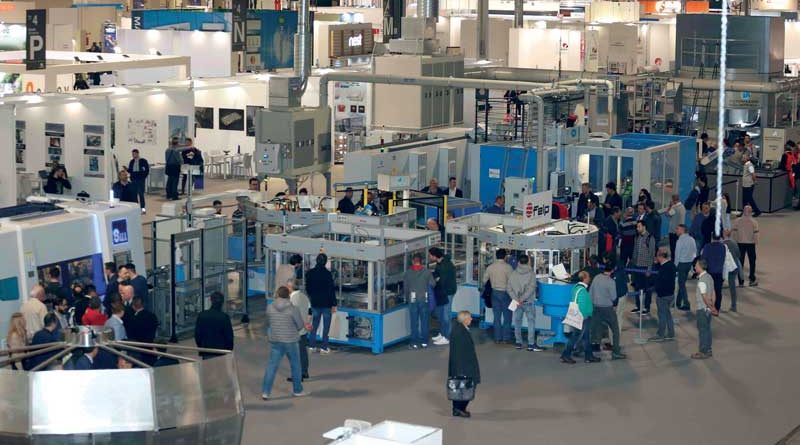When the 4.0 Factory Is Made-in-Italy
Eleven companies – all of them from Italy – joined to create a project, named FACTORY4.NOW, which led to a production line for ball valves. The control panel, capable to monitor production parameters and conditions of each workstation in real time, makes the line fully “4.0”.
by Silvia Crespi
The latest edition of the MCE exhibition showed an example of “Italian spirit” capable to join and create a network. Eleven Italian companies joined their knowledge and skills to build an actual production line for making a ball valve starting from the raw material, a brass rod, and following a “4.0” way. The eleven companies involved into the FACTORY4.NOW project are Almag, which provided the brass rod; FarmBrass (billet heating and cut); Automazioni Industriali (forging); STB Officine Meccaniche (die); So.Tec (fume filtration plant); Cogeim (shotblasting); BTB Transfer (machining); Eurofimet (washing system); Sala (ball machining); Felp (assembly and testing line) and XPLAB, which took care of the general monitoring system.
The production line, in details
The line is made of two ends. At one end of the line the production of the ball is started, while at the other end the valve body production begins. After different types of machining, the two components converge to the robotised assembly, control and testing stations. Then, the finished product is unloaded without any need for manual intervention. All machines are connected and managed by means of a network in an Industry 4.0 framework. More in detail, the CN Flexiball machining centre from the company Sala produces the ball, ensuring the valve’s tightness, which is then moved to the assembly station by means of a robot. At the other end of the plant, the rod is fed into the production of the valve body. The first station is an induction oven manufactured by FarmBrass. Here the rod is heated and cut into chunks, which are picked up by a robot in order to reach an NC press by Automazioni Industriali, where these are forged. The forged valve body is then put through a cooling tunnel and then moved to Cogeim’s sandblasting/shot peening station. Here, a vision system guides the piece, which is brought to a rotary table transfer with a horizontal axis (BTB Transfer) where the piece itself is processed. From here, it is automatically unloaded onto a conveyor belt to reach Eurofimet’s washing/drying station. Afterwards, the piece is ready for the assembly station.
From the assembly line to the control panel, the heart of the line
The assembly and testing station, manufactured by Felp, is entrusted with assembling the valve body and ball and carrying out all the necessary tests. Assembly requires three phases: mechanical assembly, testing and a finishing stage. The assembly station also has the task of certifying the quality of the finished product, even in terms of safety. The complete and tested valve was manufactured during the trade show at a rate of one item every 4 seconds. The actual heart of the line is the control panel, designed by XPLAB, which oversees the entire production process, also monitoring in real time the conditions and parameters of every single machine. “This 4.0 Factory is the real implementation of the Industry 4.0 concept”, said Paolo Lozzi, owner at XPLAB . “All machines are connected by a network to one another and to a control centre. A 3D synoptics allows the operator to have a synthetic and immediate vision of the plant situation. FACTORY4.NOW is an important example, not just technologically, but also as regards how much value we can create by cooperating”. Finally, the entire line has zero impact from an environmental standpoint. In fact, it is equipped with a coalescence filtration plant for the oily fumes generated by the forging press, designed by So.Tec.

